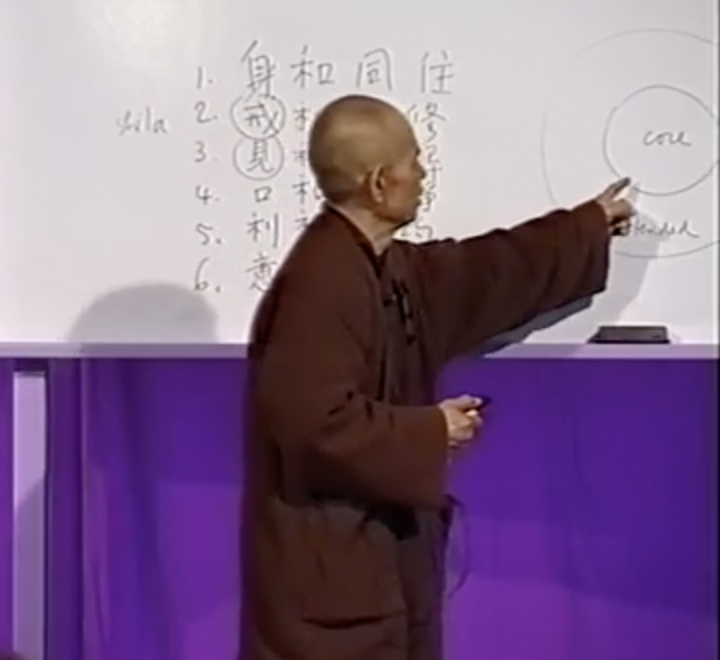Ga offline met de app Player FM !
How do we Practice as a Sangha
Manage episode 282867036 series 1392845
2000-06-03 (77-minutes) – It’s been a long while since posting a dharma talk for you all, and for that I apologize. Today for our Day of Mindfulness at Deer Park Monastery, we heard this talk from June 3, 2000 at New Hamlet, Plum Village. The talk is part of the 21-Day Retreat that year with the theme of Eyes of the Buddha.
For this talk, we take a deep dive into what it means to be sangha. Some of what Thay shares is for the monastic sangha, but can be equally applied to a lay community. Right out front, Thay says the very minimum number for a sangha is four people. He then proceeds to outline the steps for the Sanghakarman Procedure.
From this presentation, the rest of the talk focuses on the Six Togethernesses. A real sangha must practice all six.
- Body. Being physically present in one place.
- Mindfulness Trainings
- Sharing. Dharma discussion. Nonverbal action. Presence. (View, insight, understanding, wisdom)
- Speech. Loving speech. Calm and gentle.
- Material resources are shared equally
- Happy and joyful. Synthesis of all ideas.
Toward the end, Thay explains the difference between the core sangha and the extended sangha.
I hope you enjoy the talk.

298 afleveringen
Manage episode 282867036 series 1392845
2000-06-03 (77-minutes) – It’s been a long while since posting a dharma talk for you all, and for that I apologize. Today for our Day of Mindfulness at Deer Park Monastery, we heard this talk from June 3, 2000 at New Hamlet, Plum Village. The talk is part of the 21-Day Retreat that year with the theme of Eyes of the Buddha.
For this talk, we take a deep dive into what it means to be sangha. Some of what Thay shares is for the monastic sangha, but can be equally applied to a lay community. Right out front, Thay says the very minimum number for a sangha is four people. He then proceeds to outline the steps for the Sanghakarman Procedure.
From this presentation, the rest of the talk focuses on the Six Togethernesses. A real sangha must practice all six.
- Body. Being physically present in one place.
- Mindfulness Trainings
- Sharing. Dharma discussion. Nonverbal action. Presence. (View, insight, understanding, wisdom)
- Speech. Loving speech. Calm and gentle.
- Material resources are shared equally
- Happy and joyful. Synthesis of all ideas.
Toward the end, Thay explains the difference between the core sangha and the extended sangha.
I hope you enjoy the talk.

298 afleveringen
Alle afleveringen
×Welkom op Player FM!
Player FM scant het web op podcasts van hoge kwaliteit waarvan u nu kunt genieten. Het is de beste podcast-app en werkt op Android, iPhone en internet. Aanmelden om abonnementen op verschillende apparaten te synchroniseren.




